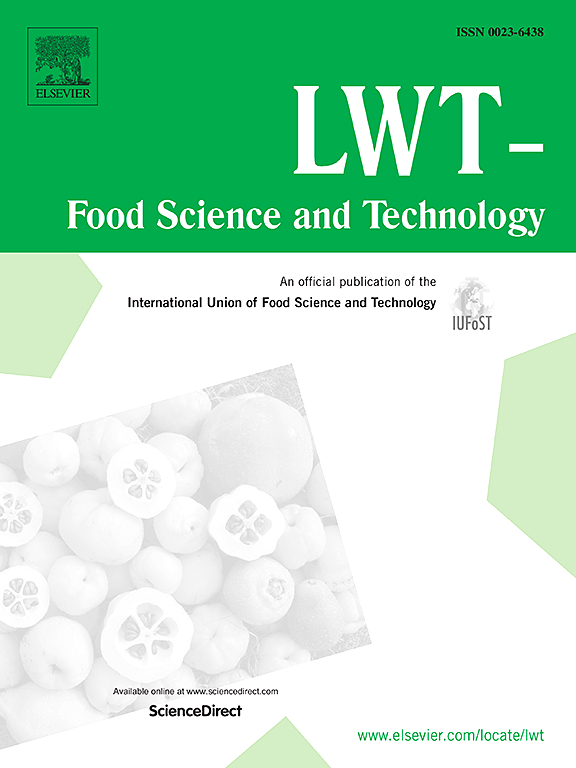从桃棕榈(Bactris gasipaes Kunth)果实白色品种中提取的新型低淀粉--营养、功能和粘贴特性
IF 6
1区 农林科学
Q1 FOOD SCIENCE & TECHNOLOGY
引用次数: 0
摘要
本文章由计算机程序翻译,如有差异,请以英文原文为准。
Novel low-amylose starch from white variety of peach palm (Bactris gasipaes Kunth) fruit– nutritional, functional and pasting properties
This work presents a novel low-amylose starch from white peach palm (Bactris gasipaes Kunth) fruit, and aimed to obtain and characterize the nutritional, morphological and physicochemical-functional characteristics of white peach palm starch (WPPS). Starch yield was close to 68 g 100 g−1. WPPS showed low moisture, water activity and lipids, and high starch content (∼89 g 100 g−1), which had <14 g 100 g−1 of amylose and up to 86 g 100 g−1 of amylopectin, being a low-amylose starch. CIE Lab colorimetric parameters, L∗, a∗ and b∗, showed a prevalent white colour with a small tendency of yellow-greener tons. L∗, a∗ and b∗ were used to estimate amylose content, being <9 g 100 g−1. FTIR spectra showed vibration bands at 3280 cm−1 and 998 cm−1. XRD diffractogram suggested that WPPS had an A-type crystalline structure and degree of crystallinity ∼24%, reflecting the amylose/amylopectin ratio on its starch. Thermogravimetric analysis indicates a WPPS stability under higher temperature, which agrees with the pasting analysis. WPPS displayed a higher pasting temperature (93.1 °C), peak viscosity (∼0.921 Pa s) and low viscosity breakdown (0.051 Pa s) and final viscosity (1.014 Pa.S), when comparing to literature. These results suggested that WPPS has great potential to be used in diverse food and pharmaceutical/chemical industries.
求助全文
通过发布文献求助,成功后即可免费获取论文全文。
去求助
来源期刊

LWT - Food Science and Technology
工程技术-食品科技
CiteScore
11.80
自引率
6.70%
发文量
1724
审稿时长
65 days
期刊介绍:
LWT - Food Science and Technology is an international journal that publishes innovative papers in the fields of food chemistry, biochemistry, microbiology, technology and nutrition. The work described should be innovative either in the approach or in the methods used. The significance of the results either for the science community or for the food industry must also be specified. Contributions written in English are welcomed in the form of review articles, short reviews, research papers, and research notes. Papers featuring animal trials and cell cultures are outside the scope of the journal and will not be considered for publication.
 求助内容:
求助内容: 应助结果提醒方式:
应助结果提醒方式:


